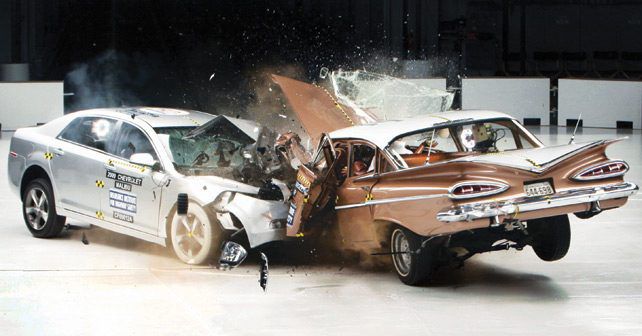
Karl knows why you’re a much better driver when you’re behind the wheel of a car from 1957 as opposed to 2017.
So, put your hand up – who wants to drive a Ford Mustang? Yeah, that’s a few hands. But how many of you saw the abysmal result it received during EuroNCAP testing? Two stars is completely unforgivable.
It’s so bad, in fact, that a fellow motoring scribe I know very well has decided that he will never get behind the wheel of a Mustang ever again. But here’s the thing – he’d happily hop into a 1965 Fastback and never give it a second thought. In fact, most of us would if given the opportunity. This illustrates the point that although we value our safety, it seems to go out of the window when it comes to classics.
No one would argue that the machines we drove in the 1960s and 1970s are less safe than the ones we drive today. But the strange thing is before the fuel crisis in the late 1970s, the power and speed of some of those cars were truly staggering. The suspension was floaty, the brakes were woeful, the steering was worse than a bus and the seatbelts were optional. But if someone tossed you the keys to a Plymouth Roadrunner or a Chevrolet Camaro and told you to go nuts, would you?
I’m sure there would be some trepidation, and not just because you could waste some classic metal if you got it wrong. There’s also the fact that if you wrapped it around a tree (which is pretty easy to do when it requires 38 turns lock to lock to counter the tail sliding out) you can pretty much guarantee you’ll end up in the morgue. The threat of death is a powerful motivator to ensure you drive safely.
Take, for example, a bunch of old classics going on a cruise. Sure, they’re probably capable of running a 13-second quarter mile and sound like Yosemite Sam with a pair of AK-47s. But generally, the owners are ambling along, simply showing off the straight metal and gleaming paintwork – eye candy is always appreciated.
Contrast this with the Asia-Pacific launch of the Lamborghini Aventador S. We were invited to drive as hard as we dared on the Phillip Island Grand Prix circuit, maxing out the new flagship Lambo. Its grip was astounding, the brakes phenomenal, and the sound was insane. But wrapped in a carbon-fibre cell, surrounded by airbags and wearing a helmet, I threw caution to the wind and punted it into corners quicker than anything I’d experienced before. And here’s the crux of the matter – by cocooning the driver, we simply encourage them to take risks.
Imagine a car which, when you got in, you were faced with a spike poking out of the steering wheel. On each side of the headrest is a pair of razor blades and the door cards were made from a bed of nails. Basically, if you have an accident, you’re going to die. So, how slowly are you going to drive now? And how much of the surrounding traffic will you be watching? Will you be texting and driving?
The saying is “drive to survive.” If we do that, it doesn’t matter whether the car we’re in is five stars or zero.
So, hand me the keys to that Mustang. No, not this year’s model – the 1965 avatar, thanks.























Write your Comment